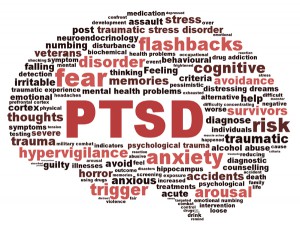This website uses cookies so that we can provide you with the best user experience possible. Cookie information is stored in your browser and performs functions such as recognising you when you return to our website and helping our team to understand which sections of the website you find most interesting and useful.

Susan E. Mazer, Ph.D. Blog
Thoughts and ideas on healthcare
Hi, and welcome to my blog! I'm Susan E. Mazer -- a knowledge expert and thought leader on how the environment of care impacts the patient experience. Topics I write about include safety, satisfaction, hospital noise, nursing, care at the bedside, and much more.
PTSD: When Memories Live in the Present
August 16, 2013
When I was a child, I had bad dreams — dreams that would wake me up. I’d go into my Mom’s room and she would walk me back to bed.
Sometimes the dreams haunted me for days. One time, I had to come home from school because I was so distraught. I had a great childhood. Just bad dreams.
 Post traumatic stress disorder (PTSD) is about haunting memories; real or made-up events — hallucinations that never leave. They show up anew for reasons sometimes unknown, but often as the result of environmental triggers, such as sounds — that bring us back to moments and thoughts, fears, and sometimes horrific events.
Post traumatic stress disorder (PTSD) is about haunting memories; real or made-up events — hallucinations that never leave. They show up anew for reasons sometimes unknown, but often as the result of environmental triggers, such as sounds — that bring us back to moments and thoughts, fears, and sometimes horrific events.
According to an article in the New York Times this week, a study has shown that critical care patients can suffer from PTSD. Being restrained, intubated, and entrapped by technologies that may be life saving is very frightening. The revisiting, reliving can show up years later. Hallucinations can be relived in the same ways my childhood nightmares survived daylight — and years.
I have always known that what happens today, if I am conscious, remains with me for a lifetime. In fact, much of my life has been reduced to a series of extraordinary moments — running the gamut from poignant, scary, thrilling, sad, joyful — the full span of emotions that life delivers. For most of us, this is probably true.
If we want patients to move forward in healthful living, then we must design the memories that they take away with them from the hospital. We must be aware of the power of their perception and proactively create positive, nurturing, comforting experiences of who we are to them.
Creating a healing environment at the bedside, providing compassionate care is not an option — it’s a necessity. And the patient’s perception of what is happening to them informs his or her emotional future.
In my last blog post, I described my own experience as a patient in a hospital for 10 days. Two weeks have passed since I was released. Much has faded for me — except for extraordinary moments that, when I think of them or speak about them, become as real for me as if I was back in that hospital bed.
Fortunately, I am fine. So many other patients are not.
What patients see and hear informs how they make sense of what is happening to them. That is why we developed and continue to provide the C.A.R.E. Channel — to offer beauty amidst suffering, fear, and anxiety. To create different memories.
What kind of memories are you designing for your patients and families?










